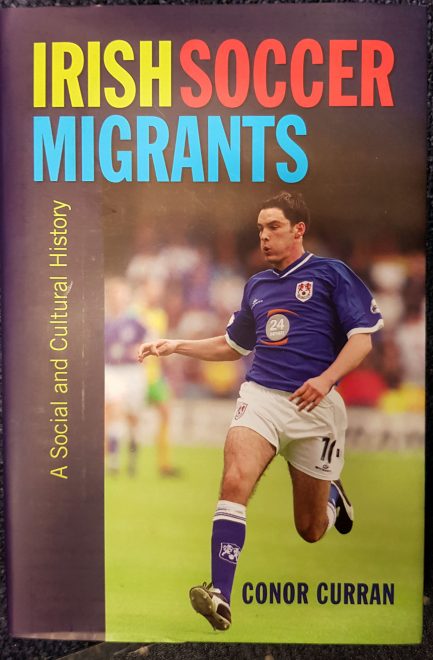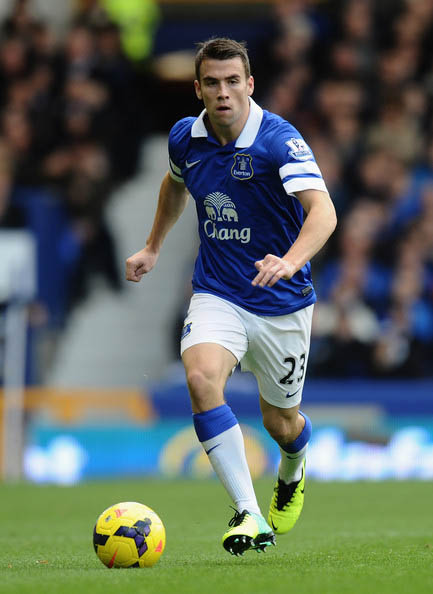
WHEN Anthony Kernan made his first team debut for Wolverhampton Wanderers back in March 1982, many of his former school friends and team mates at St Eunan’s College, including this writer, thought it would signal the start of a great career.
The Newtowncunningham man was just eighteen and looked destined for a prominent role in the Wolves team behind Scottish international striker, Andy Gray, who would later turn up on our screens as a pundit for Sky TV.
Around that same time he played for Wolves in a losing FA Youth Cup semi-final against a Watford side containing John Barnes.Unfortunately, Anthony’s first-team career in the West Midlands would begin and end with that appearance – a low-key 0-0 draw at Coventry City’s Highfield Road.
He was named on the subs’ bench at West Ham and at home to Arsenal later in the season without going on before injuring his knee in the following pre-season and that was basically the end. After a five year break from the sport he made a comeback, playing for Finn Harps and Letterkenny Rovers while forging a successful career as a businessman.

Anthony Kernan in action for Wolves in the early 1980’s.
Anthony is one of only nine Donegal born players who played in the English league between 1945 and 2010. He’s included in a new book ‘Irish Soccer Migrants – A social and Cultural History’ written by Conor Curran.
The book looks at the experiences and achievement levels of Irish-born football migrants to Britain and further afield.
In particular, it draws on interviews with twenty-four Irish-born footballers, each of whom has played league football in England or Scotland in the 1945-2010 period.
The book shares some of their playing experiences and will no doubt be of great benefit to young players who are looking at the possibility of a career in professional football, as well as historians and supporters.
Ramelton’s Michael McHugh, who played for Bradford City in the early years of his career, is the one Donegal player that Curran interviewed for his book which provides a fascinating insight into the many social challenges that many young players have faced.
Another Ramelton man, goalkeeper Conrad Logan (Mansfield Town) and Killybegs defender and Republic of Ireland captain Seamus Coleman (Everton) continue to make their living cross channel.
The other Donegal born players who played in the English league between 1945 and 2010 were Ireland’s most capped goalkeeper Shay Given from Lifford, Carndonagh defender Gary Doherty as well as Chris Fletcher, Owen Coll and Chris McMenamin. The five Donegal born players pre 1945 who plied their trade cross channel were Sheffield United’s Billy Gillespie, Jimmy Murray, Bert Smith, Charlie O’Hagan and Billy O’Hagan.
The book also lists nine Donegal players who played in the Scottish Premier and First Division. They include the afore-mentioned Fletcher, Murray, Charlie O’Hagan and Billy O’Hagan as well as another Republic of Ireland goalkeeping legend Packie Bonner (Celtic), Patsy Gallagher, Bernard Cannon, Hugh Doherty and Michael Gallagher.
Speaking to the Donegal News this week, Dr Curran said the book offers a history of local and national structures for young soccer players and the challenges they have faced through an examination of the game’s development at schools and grassroots level.
“It is hoped that it had shed some light on what has been, at a government level, a largely neglected aspect of Irish emigration and that it will also be of some value to anyone considering a career in professional football abroad, while raising a number of important issues which those young players travelling across the Irish Sea, and their families looking on anxiously, ought to be aware of in pursuit of the dream of playing professional football in England,” Dr Curran said.
The Donegal League didn’t come into place until 1971 with structured under-age competitions following suit but after a Donegal selection was easily defeated by Dublin in 1976 in the quarter final of the Kennedy Cup (traditionally Ireland’s top U14 competition), a reporter in the Donegal News suggested that it was pointless for Donegal teams to take on city teams at this level.
“Invariably the opposition is always bigger, stronger and much more mature,” he wrote at he time.
Indeed, Donegal’s soccer players struggled to get noticed until the 1990s, despite one provincial reporter noting the player potential there back as far as 1953.
Michael McHugh felt that there were many better youth players playing in the North West than those he saw playing professional football in the UK during his four seasons playing with Bradford United in the early 1990s. He recalled that he was spotted playing in the Ulster Senior League for Swilly Rovers against Culdaff through Derry-based scout the late Eddie Davis, whose son Sean was managing Culdaff at the time.
Michael also stated the FAI only became aware that he was playing professionally in England when Northern Ireland manager, Billy Bingham, enquired if he was eligible to play for Northern Ireland.
Stranorlar’s Alan Oliver, an apprentice at Peterborough around the same time, elected to join the Northern Ireland Youth squad in 1992 after he felt he had received no interest from Republic of Ireland selectors, with one Donegal News reporter claiming that ‘they haven’t even bothered to turn up to London Road and even have a look at the player’.
Irish Soccer Migrants also tells that Declan Boyle from Killybegs and Paddy McDaid from Letterkenny made Irish underage teams in the early 1990s but it also explains this probably was down to Stranorlar Vocational Schools teacher Alex Harkin being appointed Irish Schoolboys Under 18 manager.
Fast forward to 2018 and Letterkenny’s Shane Blaney this week signed a two and a half year contract with League One side Doncaster Rovers. The 18-year-old centre half was captain of the Irish Schools team last year.
Another young Letterkenny player, Dale Gorman, who plays with League Two side Stevenage, has been capped at under-age level by Northern Ireland.
Neither player is included in Dr Curran’s book which chronicles the experiences and achievements of Irish born players who emigrated to England and further afield from 1888 right up to 2010. The impact of the Troubles on the migration of Northern Ireland born players is also discussed as is the decline of Irish-born players within top flight English league football along with a number of difficulties facing future Irish football migrants.
In locating the study of Irish football migrants within the study of Irish migration to Britain, Europe and the USA, and in comparing the experiences of Irish born footballers with those of other nations, this book is the first of its kind.
The history is compiled and written by Dr Conor Curran from Ardara who was also a talented young goalkeeper who played his club football with Dunkineely Celtic. Dr Curran is an Irish Research Council Government of Ireland Postdoctoral Research Fellow in the School of Education at Trinity College.
Previously, he worked as a part-time lecturer in Irish history at Dublin City University’s Open Education Unit and has taught sports history at the International Centre for Sports History and Culture at De Montfort University, Leicester. His Ph.D. thesis was published as The Development of Sport in Donegal, 1880-1935 by Cork University Press in 2015.

Seamus Coleman, Everton.
Receive quality journalism wherever you are, on any device. Keep up to date from the comfort of your own home with a digital subscription.
Any time | Any place | Anywhere









